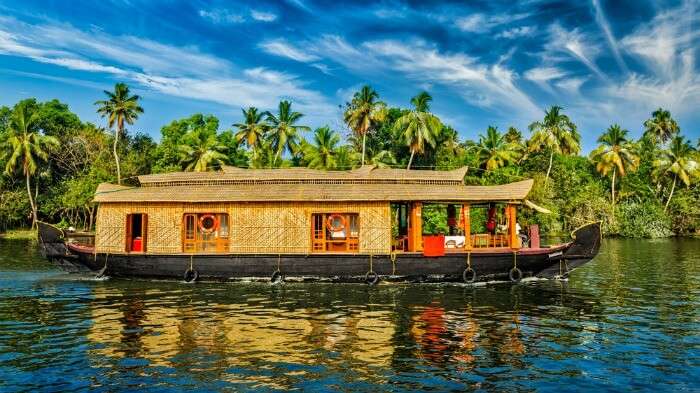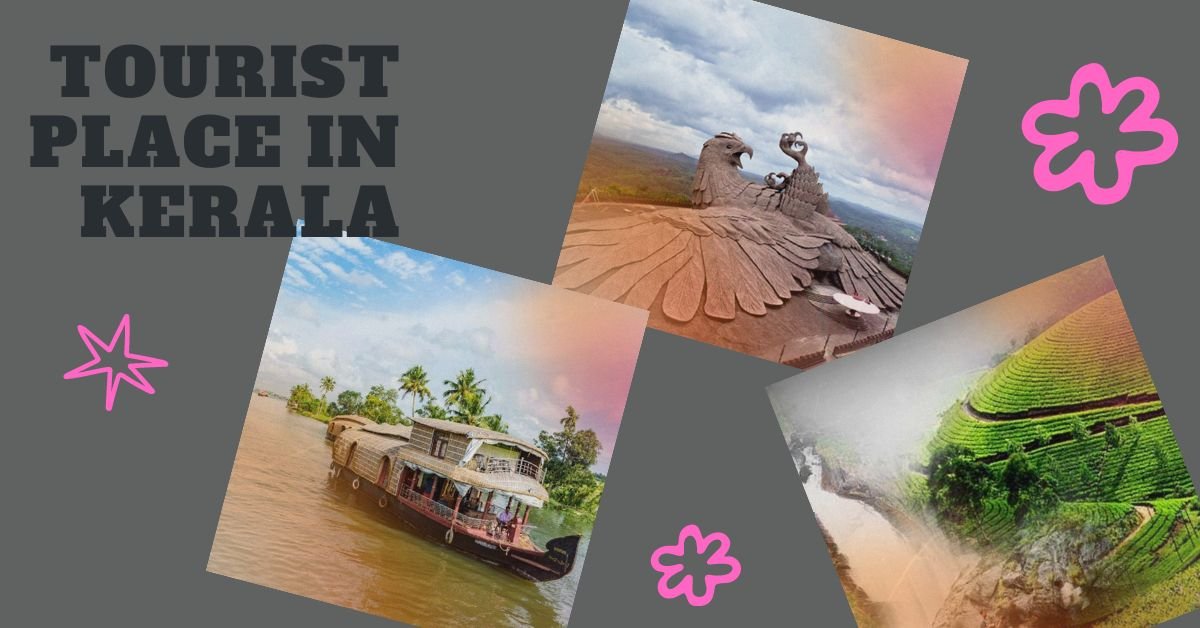Kerala, aptly known as “God’s Own Country,” is a lush haven in southern India, renowned for its natural beauty, vibrant culture, and unique traditions. The top tourist places in Kerala not only showcase the state’s diverse landscapes but also play a pivotal role in shaping the societal narrative. In this blog post, we will embark on a journey through the best and famous tourist places in Kerala, exploring their relevance, evolution, and potential future developments, and how they leave an indelible mark on the cultural fabric of the state.

Relevance and Cultural Significance:
- Alappuzha (Alleppey) – Backwaters: The backwaters of Alappuzha, a network of serene lakes, canals, and lagoons, are more than just picturesque landscapes. They are the lifeblood of Kerala’s cultural and economic identity, supporting traditional houseboat tourism, fishing communities, and agricultural practices.
- Munnar – Tea Gardens: Munnar, with its sprawling tea gardens and misty hills, is a symbol of Kerala’s agricultural prowess. The tea plantations not only contribute to the state’s economy but also serve as a cultural icon, showcasing the labor-intensive art of tea cultivation.
- Kochi – Fort Kochi and Chinese Fishing Nets: Fort Kochi, with its colonial architecture and Chinese fishing nets lining the coast, is a testament to Kerala’s historical melting pot. The relevance lies in the preservation of cultural diversity, from the Portuguese influence to the Chinese trade connections.
Evolution of Tourist Places:
- Thiruvananthapuram – Padmanabhaswamy Temple: The Padmanabhaswamy Temple in Thiruvananthapuram has evolved beyond a place of worship to become a cultural and architectural marvel. Its preservation and promotion not only attract pilgrims but also contribute to Kerala’s status as a repository of ancient heritage.
- Wayanad – Edakkal Caves: The Edakkal Caves in Wayanad have evolved from ancient rock shelters to archaeological wonders. The caves, adorned with petroglyphs, offer a glimpse into Kerala’s prehistoric past, attracting history enthusiasts and researchers from around the world.
- Kumarakom – Kumarakom Bird Sanctuary: The Kumarakom Bird Sanctuary has transformed into a vital conservation site. Its evolution aligns with Kerala’s commitment to preserving its rich biodiversity, showcasing a harmonious coexistence between nature and society.
Impact on Society:
- Environmental Conservation: Kerala’s tourist places, especially natural attractions like the backwaters and bird sanctuaries, contribute to environmental conservation. Efforts to preserve these ecosystems not only attract eco-conscious tourists but also instill a sense of responsibility among locals, fostering a sustainable coexistence.
- Economic Empowerment: The tourism industry in Kerala is a lifeline for economic empowerment. The influx of visitors supports various sectors, including hospitality, transportation, and local crafts. This economic boost creates job opportunities and bolsters the financial well-being of communities.
- Cultural Harmony: Kerala’s tourist places serve as crucibles for cultural harmony. The convergence of diverse influences in places like Fort Kochi, where European, Chinese, and Indian cultures intersect, fosters a sense of unity and acceptance among the state’s residents.
Potential Future Developments:
- Sustainable Tourism Practices: Future developments should prioritize sustainable tourism practices. Kerala has been a trailblazer in responsible tourism, and continued efforts in waste management, conservation, and community involvement can ensure the long-term preservation of its natural and cultural treasures.
- Digital Integration for Cultural Narratives: Leveraging technology for tourism can enhance visitor experiences. Digital platforms, virtual reality tours, and interactive exhibits can provide a more immersive understanding of Kerala’s history, culture, and natural beauty, making these experiences accessible to a wider audience.
- Community-Led Initiatives: In the future, increased emphasis on community-led initiatives can ensure that the benefits of tourism are shared equitably. Involving local communities in the management and promotion of tourist places can empower them economically and socially, fostering a sense of ownership.
Conclusion:
Kerala’s best and famous tourist places are not just geographic entities; they are integral to the state’s cultural narrative, economic vitality, and environmental sustainability. As we navigate the backwaters of Alappuzha, explore the tea gardens of Munnar, or marvel at the architectural wonders of Thiruvananthapuram, it becomes evident that these landmarks are more than attractions—they are threads woven into the intricate tapestry of Kerala’s societal fabric. Looking ahead, sustainable practices, technological integration, and community engagement can further elevate Kerala as a beacon of responsible tourism, where tradition, nature, and progress coalesce seamlessly. Let us celebrate the diversity, cherish the narratives, and contribute to a legacy that continues to unfold in the verdant landscapes of God’s Own Country.

Best and Famous 37 Tourist Places List in India
| Zone | States | |||
| North | Jammu & Kashmir | Haryana | Delhi
Rajasthan |
Punjab |
| Central | Uttar Pradesh | Madhya Pradesh | Chhattisgarh | Uttarakhand |
| East | Bihar
Sikkim |
Odisha | Jharkhand | West Bengal |
| West | Gujarat
Goa |
Daman Diu | Maharashtra | Dadra Nagar Haveli |
| South | Karnataka
Tamil Nadu |
Kerala
Puducherry |
Andhra Pradesh
Andaman Nicobar |
Telangana
Lakshadweep |
| Northeast | Manipur
Meghalaya |
Mizoram
Assam |
Tripura
Arunachal Pradesh |
Nagaland |
| Southeastern | Ladakh | |||
